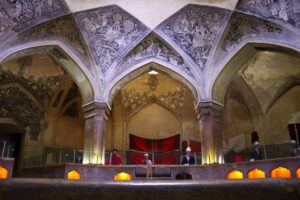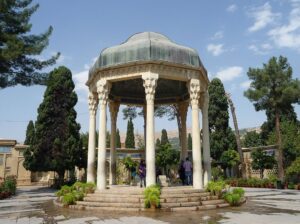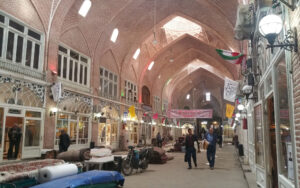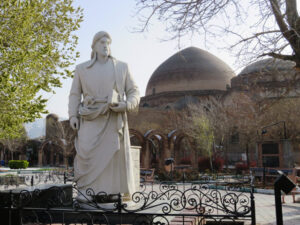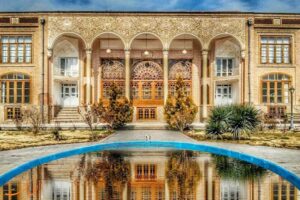Culture
The Culture of Iran, also known as Culture of Persia, is one of the most influential cultures in the world. Iran is considered as one of the cradles of civilization, and due to its dominant geopolitical position and culture in the world, Iran has heavily influenced cultures and peoples as far away as Italy, Macedonia, and Greece to the West, Russia and Eastern Europe to the North, the Arabian Peninsula to the South, and the Indian subcontinent and East Asia to the East.
SHIRAZ
Shiraz is known as the city of poets, literature, wine (despite Iran being an Islamic republic since 1979), and flowers. It is also considered by many Iranians to be the city of gardens, due to the many gardens and fruit trees that can be seen in the city, for example Eram Garden. Shiraz has had major Jewish and Christian communities. The crafts of Shiraz consist of inlaid mosaic work of triangular design; silver-ware; pile carpet-weaving and weaving of kilim, called gilim and jajim in the villages and among the tribes. In Shiraz industries such as cement production, sugar, fertilizers, textile products, wood products, metalwork and rugs dominate.[citation needed] Shirāz also has a major oil refinery and is also a major center for Iran’s electronic industries: 53% of Iran’s electronic investment has been centered in Shiraz. Shiraz is home to Iran’s first solar power plant. Recently the city’s first wind turbine has been installed above Babakuhi mountain near the city.
TABRIZ
Tabriz contains many historical monuments, representing Iran’s architectural transition throughout its deep history. Most of Tabriz’s preserved historical sites belong to Ilkhanid, Safavid and Qajar. Among these sites is the grand Bazaar of Tabriz, which is designated a World Heritage Site. From the early modern era, Tabriz was pivotal in the development, movement and economy of its three neighboring regions; namely the Caucasus, Eastern Anatolia and Central Iran. In modern era city played a vital role in the history of Iran. As the country’s closest hub to Europe, many aspects of early modernisation in Iran began in Tabriz. Prior to forced ceding of Iran’s Caucasian territories to Imperial Russia, following two Russo-Persian Wars in the first half of the 19th century, Tabriz was at the forefront of Iranian rule over its Caucasian territories. Until 1925, the city was the traditional residence for the crown princes of the Qajar dynasty.



